








We celebrate the work and accomplishments of our vendors through events, social media and partnerships. We also build relationships with our wide-range of donors to fund programs and create opportunities for our vendors to prosper.
VENDORS
Abel Putu, Aida Peery, Al Edmonson, Akindele Akerejah, Amia Walker, Amina Washington, Andre Brinson, Andrew Anderson, Angie Whitehurst, Anthony Carney, Antoinette Calloway, Archie Thomas, Beverly Sutton, Brianna Butler, Burton Wells, Carlos Carolina, Carol Motley, Charles Armstrong, Charles Woods, Chon Gotti, Chris Cole, Conrad Cheek, Corey Sanders, Daniel Ball,
Darlesha Joyner, David Snyder, Debora Brantley, Degnon (Gigi) Dovonou, Dominique Anthony, Don Gardner, Donté Turner, Doris Robinson, Earl Parker, Dwayne Butler, Eric Glover, Eric Thompson-Bey, Erica Downing, Evelyn Nnam, Floyd Carter, Franklin Sterling, Frederic John, Freedom, Gerald Anderson, Greta Christian, Harriet Fields, Henrieese Roberts, Henry Johnson, Ivory Wilson, Jacqueline “Jackie” Turner,
Jacquelyn Portee, James Davis, James Hughes, Jeanette Richardson, Jeff Taylor, Jeffery McNeil, Jeffrey Carter, Jemel Fleming, Jennifer McLaughlin, Jermale McKnight, Jet Flegette, Jewel Lewis, John Alley, John Littlejohn, Josie Brown, Juliene Kengnie, Kenneth Middleton, Khadijah Chapman, Kym Parker, Laticia Brock, Laura Smith, Lawrence Autry, Levester Green, Lu Potter, L. Morrow, Mango Redbook, Marc
Grier, Marcus McCall, Mars, Martin Walker, Mary Sellman, Maurice Spears, Melody Byrd, Michael Warner, Michele Rochon, Morgan Jones, Nikila Smith, Patricia Donaldson, Patty Smith, Phillip Black, Queenie Featherstone, Rachelle Ellison, Rashawn Bowser, Reginald Black, Reginald C. Denny, Ricardo Meriedy, Richard “Mooney” Hart, Rita Sauls, Robert Warren, Rochelle Walker, Ron Dudley, Sasha Williams,

COVER DESIGN BY CASEY BACOT
Shuhratjon Ahmadjonov, Sybil Taylor, Tonya Williams
Vennie Hill, Warren Stevens, Wendell Williams, William Mack
BOARD OF DIRECTORS

Mary Coller Albert, Blake
Androff, Nana-Sentuo
Bonsu, Jonquilyn Hill, Stanley Keeve, Clare
Krupin, Ashley McMaster, Matt Perra, Michael Phillips, Daniel Webber, Shari
Wilson, Corrine Yu
CHIEF EXECUTIVE OFFICER
Brian Carome
DIRECTOR OF DEVELOPMENT AND COMMUNICATIONS
Doris Warrell
DIRECTOR OF PROGRAMS
Darick Brown
DIRECTOR OF VENDOR

EMPLOYMENT
Thomas Ratliff
ANNEMARIE
Staff Reporter CUCCIAOver 400 people streamed in and out of Capitol Hill on July 19 with a simple request: Help us end homelessness.
Advocates, homeless service providers, officials and people with lived experiences of homelessness from across the nation were in D.C. for the National Alliance to End Homelessness’ (NAEH) annual conference.
For the first time since 2019, they were participating in NAEH’s Capitol Hill Day, meeting with 220 representatives and senators to demand more funding to support homeless services programs. The Senate fiscal year 2024 appropriations bill, released one day later, reflected measures recommended by the NAEH.
Conference attendees called on legislators to add $200 million in fiscal year 2024 for federal Homeless Assistance Grants, a broad category including money for shelters, case management and housing programs that is distributed to states. They asked for some of that money to go to cost-of-living increases for staff in housing, shelter and outreach programs. Advocates also demanded a $2.4 billion increase for the Housing Choice Voucher Program.
The Senate’s draft appropriations bill includes an increase of $275 million for Homeless Assistance Grants, $25 million of which will fund raises for homeless services staff. It also provides a $1.5 billion increase to the Housing Choice Voucher Program, part of which will fund 4,000 new vouchers, targeted at veterans and youth leaving foster care. The bill will also meet another request that allows states
James Davis Aug. 1
ARTIST/VENDOR
Melania Scott Aug. 3
to apply for funding every other year instead of every year. The application process can be arduous, according to conference attendees who spoke about it — many let out a cheer when NAEH announced they’d be advocating to change the guidelines.
“Ending homelessness is good for everyone in our communities,” Steve Berg, NAEH chief policy officer said at a conference-wide session. “We need to take funding to scale and policy to the next level and we need the help of the U.S. Congress to do that.”
The Senate will ultimately have to come to an agreement with the House, which proposed smaller increases and in some cases cuts to affordable housing and homelessness programs.
Advocates also spoke to lawmakers about stopping legislation that would criminalize or politicize homelessness, including a bill that would prevent some areas from using the “Housing First” strategy to end homelessness.
A group of about a dozen people from Washington, D.C., led by members of the People for Fairness Coalition, met with staffers from Rep. Eleanor Holmes Norton’s office (and very briefly, Norton herself). During the meeting, D.C. residents called for the United States to institute a universal right to housing, make it easier for returning citizens to find housing and make it easier to rent with a voucher.
While NAEH highlighted specific budget demands, many people at the conference suggested the United States needs to implement larger changes, such as halting evictions or making the Emergency Rental Assistance Program permanent. Representative Cori Bush, who herself has experienced homelessness, called for the federal government to overhaul a larger system she says punishes people for being in poverty.
“A lot of it comes from policy violence,” Bush said at one of the sessions. “We can’t stop because every single moment somebody needs housing, and it makes me emotional because people die when we don't help.”
Bush announced at the conference she would reintroduce her “Unhoused Bill of Rights,” which challenges the federal government to end homelessness, declare homelessness a public health emergency and provide universal rental assistance, among other recommendations.
□ Let’s work on those paper sales together! Come see Thomas to learn how to accept Venmo and CashApp payments and how to use Twitter to let customers know where you’re selling at.
□ Wondering if the office is closed today? Curious about the workshop schedule? Keep up with the latest vendor information at streetsensemedia.org/vendor-info.
□ Receive extra newspapers for referring someone you know to new vendor Orientation. Every Tuesday and Thursday at 2 p.m.
Read this democratically elected code of conduct, by vendors, for vendors!
1. I will support Street Sense Media’s mission statement and in so doing will work to support the Street Sense Media community and uphold its values of honesty, respect, support, and opportunity.
Akindele Akerejah
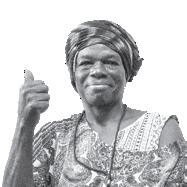

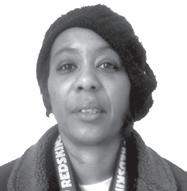

Aug. 4
ARTIST/VENDOR
Jacquelyn Portee
Aug. 9
ARTIST/VENDOR
Mary Sellman
Aug. 15
ARTIST/VENDOR
2. I will treat all others, including customers, staff, volunteers, and fellow vendors, respectfully at all times. I will refrain from threatening others, pressuring customers into making donations, or engaging in behavior that condones racism, sexism, classism, or other prejudices.
3. I understand that I am not an employee of Street Sense Media but an independent contractor.
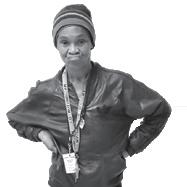
4. While distributing the Street Sense newspaper, I will not ask for more than $2 per issue or solicit donations by any other means.
5. I will only purchase the newspaper from Street Sense Media staff and volunteers and will not distribute newspapers to other vendors.
VENDOR
PROGRAM ASSOCIATES
Aida Peery, Clifford
Samuels, Chon
Gotti
VENDOR
PROGRAM
VOLUNTEERS
Beverly Brown, Roberta Haber, Ann Herzog, Madeleine
McCollough, Dylan Onderdonksnow, Amelia Stemple, Tyler Bruno
MANAGER OF ARTISTIC WORKSHOPS
Maria Lares
EDITOR-IN-CHIEF
Will Schick
STAFF REPORTER
Annemarie Cuccia
EDITORIAL INTERNS
Cole Kindiger
Jessica Rich, Casey
Bacot, Gabriela
Ferreira Reitz
ARTISTS-INRESIDENCE
Ariane Mohseni (Film), Bonnie Naradzay (Poetry), David Serota (Illustration), Lalita Clozel (Film), Willie Schatz (Writing), Leslie Jacobson (Theater), Roy Barber (Theater), Rachel Dungan

(Podcast)
ARTS EDITOR (VOLUNTEER)
Austine Model
OPINION EDITOR (VOLUNTEER)
Candace Montague
EDITORIAL
VOLUNTEERS
Josh Axelrod,
Ryan Bacic, Lilah Burke, Chelsea Ciruzzo, Lenika Cruz, Alison Henry, Kathryn Owens, Andrew Siddons, Bill Meincke
6. “I will not distribute copies of “Street Sense” on metro trains and buses or on private property.”
7. I will abide by the Street Sense Media Vendor Territory Policy at all times and will resolve any related disputes with other vendors in a professional manner.
8. I will not sell additional goods or products while distributing “Street Sense.”
9. I will not distribute “Street Sense” under the influence of drugs or alcohol.
10. I understand that my badge and vest are property of Street Sense Media and will not deface them. I will present my badge when purchasing “Street Sense” and will always display my badge when distributing “Street Sense.”
Ann Oliva, the CEO of the National Alliance to End Homelessness (NAEH), has been working to end homelessness for 30 years. She’s worked in transitional housing programs, community responses and at the U.S. Department of Housing and Urban Development.
In 2022, Oliva assumed her role as CEO of NAEH one of the prominent national nonprofit organizations that advises and coordinates responses to homelessness. Street Sense caught up with Oliva at this year’s conference, held July 17 to 19 in D.C. She continued to press on priorities she established at last year’s conference, including centering racial justice and lived experience, ending unsheltered homelessness and to combat negative stereotypes of people who sleep outside.
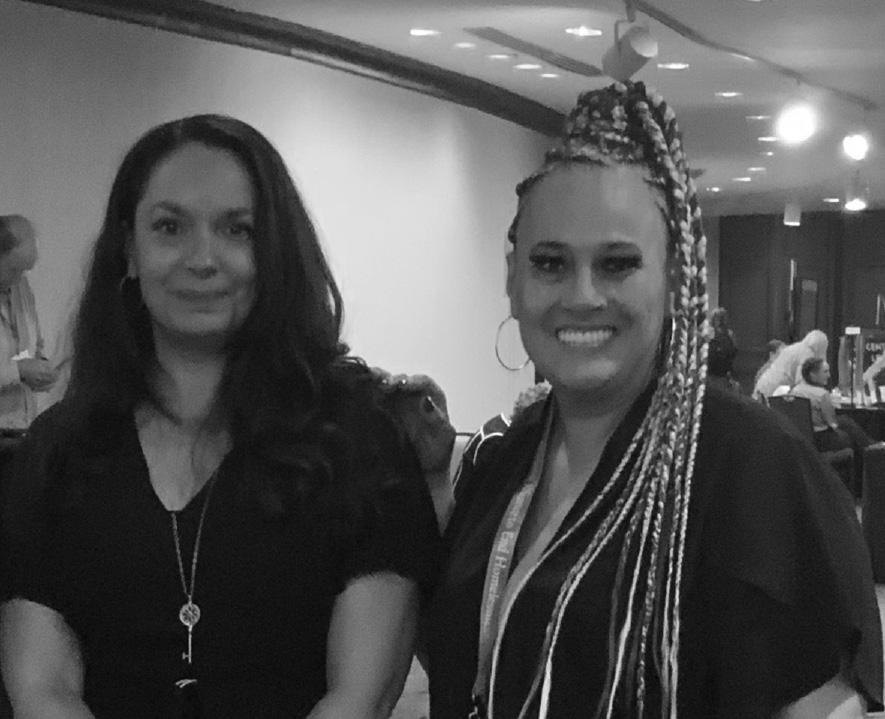
I think it’s going to very likely get worse before it gets better. We’ve seen unsheltered homelessness rise every year since 2015. We have strong suspicions that the 2023 Point-In-Time Count will show across-the-board increases. We also know that because of the affordable housing crisis, the number of people who are at risk of homelessness is increasing. That causes more people to come in the front door than the system can actually handle. Even if the system is working perfectly, which most systems can’t because they're not resourced in that way, without affordable housing, it’s hard to get people back out.
Wages are stagnant, the difference between rent and wages is increasing. We need systemic solutions to what is a very systemic problem, although it is often portrayed by our detractors as an individual failing. It is absolutely not that, it is a set of systemic problems that have to be addressed. The bright light there though is that people understand it in a different way, and affordable housing is a topic of conversion. We have some opportunity to hone in on that and hopefully make some changes.
It is a roadblock, it is not the only roadblock. And when I say funding, I actually don’t mean homelessness funding.
Homelessness funding is incredibly important, we need to have more of it. When we look at the progress that’s been made on veterans, one of the reasons for that is that the scale of the federal investments is close to the need.
But I mean affordable housing resources, Housing Choice Vouchers, other types of rental assistance, cash assistance which worked incredibly well during the pandemic. It’s a beautiful case study of how when you give folks cash and you let them make their own choices, we can prevent evictions and we can prevent homelessness. We need affordable housing and rental assistance at scale and that would be a game changer for our field.
Affordable housing is the first one, so many communities are struggling with it. Services are an issue right now, as encampments grow and homelessness becomes more visible, elected leaders are being pressured by housed constituents to act, and those actions often are political decisions, not strategic decisions. And that dynamic is causing a lot of challenges for our providers, especially providers who have contracts with those same city or county or state agencies who are making decisions that we wouldn't agree with.
There are a few communities that are making really good progress by going into the encampment tent by tent and asking people what they want and need, and that feels like a shift in our approach, like let’s actually ask the folks outside what they want and need to be able to get housing and trying to help them. I think harm reduction models are something that feels really important right now and is innovative.
We’re still struggling like many other big cities with unsheltered homelessness. Encampments are getting smaller because people are being driven out of the city center and it’s getting harder for providers to find folks, it's getting harder for outreach workers to do their job.
I think that where D.C. has done really well in the past is on family homelessness, the initiatives around shelter in every ward, the work they've done on Rapid Rehousing has been really strong. I would love to see the work on individuals and chronic homelessness be as strong as the work that the District has done on families.
‘A very simple mission:’ Q and A with the director of theNAEH CEO Ann Oliva (left) with Street Sense Media vendor Rachelle Ellison. Photo courtesy of Rachelle Ellison
We want to build on all the things the Alliance has been so good at over the last 40 years and add things that are important to the field, like partnerships with people with lived experiences of homelessness. Racial justice and housing justice are important to me personally, and that’s somewhere that we have some room to grow. You're going to see some grassroots-level advocacy from us. We just announced this fund that will provide direct financial assistance to people who have experienced homelessness and are ready to launch something creative, something artistic, a business, and just need a boost of assistance.


Homelessness is part of something bigger, and it is being politicized in a way we have not experienced before. When you have a presidential candidate talking about rounding people up experiencing unsheltered homelessness and putting them in camps outside of town, we should all be alarmed. And it’s not just one presidential candidate, it’s happening at the community level and the state level. So it’s really important that broader justice movements know what’s happening so they can incorporate it into the work they're doing around racial justice, reproductive justice, environmental justice. Homelessness is a part of all of those pieces.

Going back to the beginnings of housing policy, people were marginalized through the housing system. And the effects of those racist policies have reverberated through generations, and without racial justice we’re actually not going to achieve housing justice. To me, housing justice is really just ensuring people have safe affordable housing of their choice that is accessible to folks, and it seems really simple, but apparently, it’s not as simple as we would like it to be.
It’s our job at the Alliance to try and model some of that. Our colleagues at the Housing Justice Collective did a survey on racial equity and found communities did the things that we asked them to do, they gathered data, they know who is in their system, but they don’t know what to do next. Or they’ve included people on boards but don't understand what the next step is. They call it the equity plateau, things went up to a certain place and now they’ve evened out. It’s our job at the Alliance to elevate those conversations so people know what to do, so the partnership isn't tokenizing, so equity work is driving change. We’re still learning too, but to the extent that folks see us doing some principled struggle, I think it’s really important, because if we’re in principled struggle, then other folks feel more confident in going through that process.
Pivoting to the Alliance — you’ve mentioned this is a new chapter for NAEH. How is the organization changing?
I know NAEH has recently appointed its first director of lived experience, Albert Townsend. What can organizations do better to partner with people with lived experience?The universal right to housing is an issue many homeless people are reckoning with in Washington, D.C. Here, homeless advocates look on as a staffer for Congresswoman Eleanor Holmes Norton takes notes and answers questions. Photo by Andrew Anderson Gracias Garcias, a Street Sense Media vendor talks about the need to provide housing to everyone. Photo by Andrew Anderson While addressing the need for affordable housing, homeless advocates continue to push for housing rights. Here are some advocates taking a photo with Congresswoman Eleanor Holmes Norton. Photo by Andrew Anderson
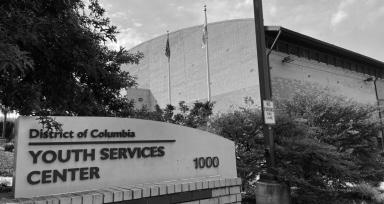 JENNY GATHRIGHT, COLLEEN GRABLICK DCist/WAMU
JENNY GATHRIGHT, COLLEEN GRABLICK DCist/WAMU
Understaffing at District of Columbia’s youth pretrial detention facility reached dangerous levels this spring, leading to kids being confined in their cells beyond legal limits and hindering the facility’s response to assaultsw on youth, according to advocates and the facility’s oversight agency.
The Youth Services Center (YSC), where kids in D.C. are detained as they await trial, is relying on extended periods of confinement to cope with the lack of staff, several youth defense attorneys and the city’s independent juvenile justice monitor say. The staffing shortage has been so severe that the agency has broken its own policies on monitoring kids at risk of suicide, according to the independent monitor. The monitor also says the shortage delayed the response to an assault that occurred in the facility.
The Department of Youth Rehabilitation Services (DYRS) has been losing staff steadily for the last five years – as of this spring, there were almost 30 fewer youth development representatives, or YDRs (essentially corrections officers), on staff than there were in 2018, according to the independent monitor’s data. In many cases, that means the facility is staffing units with one officer where there used to be two. The agency has also reportedly resorted to using administrative or maintenance staff to fill in for trained YDRs.
Meanwhile, the population of youth at the facility has only increased in recent months, reaching a peak of 91 on May 31 before falling back below its capacity of 88, to 78 as of last week.
One consequence, advocates for youth say, is that kids have been confined to their cells for as many as 23 hours a day, sometimes for days at a time. This appears to violate District law on room confinement for detained young people, which says confinement can only be used as a temporary response to safety issues and should not last longer than six hours.
YSC has also seen an increase in youth-on-youth assaults, according to the facility’s independent monitor. Staff have struggled to respond to some of these assaults because there aren’t enough YDRs, the monitor says.
In an email to DCist, DYRS denied that kids have been held up to 23 hours in their cells, though a spokesperson conceded that extreme staffing shortages have led to some “modifications” in out-of-cell time. The agency declined to answer most questions regarding allegations about conditions at YSC, including questions about whether DYRS is breaking its policies on supervision for kids at risk of suicide and questions about youth-on-youth assaults.
The spokesperson instead offered an emailed written
statement.
“At DYRS, the safety, security, rehabilitation, and well-being of the youth under our care – either at our secure facilities or within the community – is our top priority,” it said. “We remain steadfast in our commitment to provide our young people an environment in which they can successfully transition into adulthood.”
In public testimony, government officials have conceded that staffing is a major problem at DYRS, and offered some solutions: In testimony before the D.C. Council last month, Deputy Mayor for Public Safety Lindsey Appiah said the agency is rotating schedules frequently in an effort to retain its workforce, and that officials can keep the population at YSC manageable by moving kids to other facilities where possible.
“We certainly have a blueprint to ensure the safety of youth and staff regardless of the numbers,” Appiah told DCist/ WAMU in an interview ahead of her testimony.
A DYRS spokesperson later confirmed that 16 YDRs were starting in July, and an additional 15 YDRs were expected to be onboarded in August. The agency also has a new acting director after months of interim leadership: Sam Abed, who formerly led Maryland’s juvenile justice system, assumed leadership of DYRS this month.
Still, the ongoing crisis at the facility has parents, advocates, and the agency’s independent monitor concerned for the safety of children in DYRS custody – 99% of whom are Black and Hispanic, according to a study from D.C.’s Criminal Justice Coordinating Council.
One parent with a child at YSC, who agreed to speak on the condition of anonymity to protect their child’s privacy, said they “cringe just to think my child is in that place.”
“I pray that safety is over my child and all of the children,” they said. “But it don’t seem to be that way, from my understanding.”
YSC is supposed to offer programming and schooling to the children in its care, most of whom are waiting for court hearings in juvenile court or Superior Court. Some young people there have already been convicted and are awaiting transfer to another secure facility.
According to DYRS’s website, YSC “focuses primarily on meeting the basic needs of the residents, including diagnostic assessments, medical and behavioral health services, and educational services,” but it also provides youth with “physical fitness, mentoring opportunities, and creative arts programs.”
And DYRS, the agency that runs the facility, has a troubled history: In 2020, a judge officially ended more than 30 years of court-mandated oversight prompted by a class-action lawsuit
over its treatment of the youth at Oak Hill rehabilitation center. While under court oversight, the city implemented various reforms to its youth rehabilitation programs; namely, it opened YSC in 2004, closed Oak Hill in 2009, and replaced it with a smaller and more humane facility for committed youth called New Beginnings. YSC and New Beginnings are now monitored by D.C.’s Office of Independent Juvenile Justice Facilities Oversight, led by executive director Mark Jordan, who has full access to conduct random inspections and interviews of residents.
YSC has a capacity of 88, which it has exceeded several times since it opened in 2004 – at its peak population in 2009, YSC held 156 kids, according to data from Jordan. The population began to fall as the District underwent a spate of juvenile justice reforms, and the pandemic reduced the population even further. The facility has been well under capacity for several years, which made the steady loss of YDRs less problematic at first.
But that changed this year.
In January 2023, the daily population of YSC hovered around the mid-forties, according to Jordan’s data. By midApril, more than 70 kids were being held there. And by the end of May, the facility went over its capacity for the first time in six years, peaking at 91 kids. (Since then, the population has fallen below 88 again, hovering in the high 70s.) The exact reason for the increase is unclear, but it’s likely a combination of juvenile arrest rates and the rate at which judges are ordering youth detained pretrial.
The result is that a skeleton staff are having to supervise far more kids. In 2018, YSC averaged about 140 YDRs on staff with a population that hovered between approximately 30 and 50, according to data provided by Jordan, the independent monitor. But as of May 11, DYRS had the equivalent of 111.5 full-time YDRs to supervise about 70 kids. And, Jordan says, these numbers don’t capture the true depth of the day-to-day staffing challenges at YSC, since staff who are on leave are included in the total even though they are not available to work. The results have led to severe lockdowns and safety challenges.
The situation began to grow increasingly dire this April, after a serious fight among youth led to a facility-wide lockdown where kids were only allowed out of their cells one at a time for days, according to Jordan.
The lockdown began on April 10, when Jordan says a conflict between youth got so out of hand that DYRS had to call the Metropolitan Police Department — a very unusual step for a facility that is supposed to have staff equipped to
manage any incidents.
“Once that incident was under control,” he says, “there was a period of days when youth were being let out one at a time.” The lockdown lasted at least three days, and perhaps longer, according to Jordan.
Often referred to as “one-in, one-out,” this type of lockdown could mean in some cases that kids are spending between 22 and 23 hours per day in their cells, only being let out in brief stints every 10 or so hours, depending on the number of kids housed on each unit, Jordan says.
Multiple attorneys with clients at the facility told DCist/ WAMU that clients have intermittently been held in their cells for as long as 11 hours at a time.
“We have clients who are saying that instead of going to school for a number of hours a day, they’re getting work packets that they have to do behind their door and have to knock to try and get instruction through a cell door if they have questions,” said Eduardo Ferrer, policy director of Georgetown University’s Juvenile Justice Initiative. “They’re coming out maybe for an hour every ten or 11 hours or so, in shifts, and so in a 24 hour period, they may be coming out one, maybe two hours total.”
Heather Pinckney, the director of D.C.’s Public Defender Service, testified under oath before the D.C. Council on June 27 that four out of the five units at YSC were on “one-in, one-out” the previous week. Schooling for the kids, she said, happened through their cell windows.
“Teachers – the ones trying to save them — had to teach them by holding up their packets to the window of the cells where they sat,” Pinckney said. Jordan, too, said that kids at the facility have been locked in their cells during school hours, which means teachers must pass learning materials to them through their doors.
Those extreme “one-in, one-out” lockdowns have remained rare, Jordan says. However, he adds, increased restrictions on out-of-cell time have become commonplace at YSC. When Jordan tours the facility now, he expects that at least one housing unit will be only letting kids out of their cells in small groups, because of a combination of staffing shortages and concerns about conflicts between youth, he says. In practice, this can mean less than five hours of out-of-cell time per day for the young people.
“It’s not great to be running units like this,” Jordan says. “The kids get frustrated and programs suffer.”
The situation has left parents concerned about the state of the facility and the safety of their kids.
The parent interviewed by DCist/WAMU said they have been pressing the facility in recent months, asking “Why is my child always on lockdown? Why is my child not coming out? Why can’t I talk to my child? What’s happening?”
In response, they say, staff explain that they are stretched thin.
These kinds of hours-long lockdowns appear to violate D.C. law, which states that “secure juvenile facilities shall not use room confinement on a juvenile for the purposes of discipline, punishment, administrative convenience, retaliation, or staffing shortages.”
The law says room confinement can be used temporarily, in response to behavior that threatens “imminent harm to the juvenile or others,” or “imminent danger to the safe or secure operation of the facility.” But even then, the law says, a child cannot be confined in their room for longer than six hours. After six hours, the young person must return to the general population, get transported to a mental health facility or medical unit in the facility, or be provided with special individualized programming to address the issues that led to their confinement.
DYRS did not answer multiple questions and follow-ups from DCist/WAMU about whether it had broken this law.
Advocates and lawyers say DYRS has also been in violation of its own suicide prevention policy. Last month, Jordan says he saw several occasions where DYRS did not have enough staff to provide one-on-one monitoring for kids with the highest suicide risk, as the agency requires.
“They mitigate it in other ways, but they have to violate their own policy because they just don’t have enough staff,” Jordan says. “That’s another example of the way in which staffing levels really make a difference, in a tangible way, to create risk.”
DYRS also did not respond to questions about whether it has broken this policy and how staff are supervising children at risk of suicide.
The staffing shortage has become so severe that in some extreme cases, Jordan says, he’s seen the agency call in maintenance staff or administrative staff to help man the facility when there haven’t been enough YDRs. Jordan says this “shouldn’t happen.”
“YDRs are required to have specific trainings,” he says. “You can’t casually put people in [these] positions.”
DYRS also provided no comment on this allegation from Jordan.
Jordan also says the facility is regularly staffing units with one YDR where there used to be two. DYRS’s own website states that two YDRs are assigned to each unit at all times; in fact, a court used to require the agency to keep two YDRs on each unit, as well as a certain total number of YDRs overall. But since court oversight ended at the end of 2020 — and since the COVID-19 pandemic led to nationwide staffing challenges in corrections — the agency has steadily lost staff and currently has about 40 fewer YDRs than the court would have required.
The decline in staff has stymied the agency’s ability to keep kids safe at YSC, particularly as Jordan says staff have told him there has been an increase in conflicts and incidents between youth.
In one recent case on June 17, he says, understaffing delayed a response to an emergency when a young person at the facility was assaulted and seriously injured by a group in an outside recreation area. The one YDR on the unit was in an adjacent indoor area with another group of kids and didn’t even initially see the assault start, he says. It took nearly a minute for the YDR to get over to the fight outside — at which point more youth had piled on to assault the victim.
“The fact that there was only one YDR delayed the response substantially,” Jordan says.
YSC staffing levels over time, compared to the staffing requirements ordered by the court over the course of a class action lawsuit often referred to as “Jerry M.” Courtesy of the D.C. Office of Independent Juvenile Justice Facilities Oversight
The increased reliance on room confinement and ongoing safety concerns have advocates afraid that the city’s juvenile justice system is backsliding after years of reform and progress had improved conditions for kids at YSC.
Ferrer says he’s seen “a return to a very punitive and disorganized culture that I have not seen in D.C. at DYRS in over a decade.”

One of the latest expressions of this “punitive” culture, advocates say, manifested in Bowser’s recently unveiled crime bill, which proposed a change to the juvenile detention statute that would significantly expand pretrial detention for youth.
The change would have favored more pretrial detention for a larger range of crimes, including crimes committed without a weapon. It also would have allowed judges to detain youth for their own protection.
Bowser officials say the changes were a way to save kids’
lives at a time when more and more of them are being killed by gunfire in the District, but the bill received significant opposition from youth defense attorneys and members of the D.C. Council, who cited research showing that juvenile detention increases kids’ likelihood of committing crimes in the future. The council ultimately passed a temporary crime bill that included other elements of Bowser’s bill but significantly pared back the changes to juvenile detention.
At a D.C. Council hearing last month, advocates wore shirts with the words “Care Not Cages” to protest Bowser’s proposed changes to juvenile pretrial detention. Jenny Gathright / DCist/ WAMU
Mylan Barnes, who spent time at YSC as a teen and co-chairs D.C.’s Juvenile Justice Advisory Board, says she feels this focus on punishment is counterproductive — the most valuable period of healing for her, she says, came after her incarceration, not during it. After returning to the community, she worked with one of the agency’s Achievement Centers – communitybased locations with arts programs, support groups for youth, and vocational training programs – through which she was able to get an internship.
“Why didn’t I have access to certain resources until I got out? Until I was ‘good enough’ to get it?” she asks.
The parent who spoke with DCist/WAMU also says they feel D.C. has not provided their child with enough services while detained, incarcerated, or in group homes — including quality education, vocational training, effective and comprehensive mental health services, or enriching outdoor activities.
“Instead of rehabilitating them, we’re messing more with their mental state,” the parent says. “I’ve seen that it’s kind of like a setup. They keep recycling them back through YSC, recycling them back, and then [the next step is] federal prison.”
City leaders have pushed back against this framing and repeatedly stated DYRS’ is committed to “loving” children in their custody.
“One of the things we said about DYRS over time is that we love our kids, and we have to ask ourselves, ‘What does love look like in public policy?’” Appiah, who worked at DYRS for years before becoming deputy mayor, said at the press conference announcing Bowser’s bill. “This is what love looks like in public policy: it does look like boundaries.”
But Ferrer couldn’t disagree more.
“There is no definition of love that encompasses the trauma, violence, and general lack that our kids are being subjected to at YSC right now,” he says. “If this is what love looks like to the [Bowser] administration, I think they need to do a serious self-examination of their definition of love.”
This story was originally published by DCist/WAMU

 CASEY BACOT, COLE KINDIGER, GABRIELA REITZ, JESSICA RICH Editorial Interns
CASEY BACOT, COLE KINDIGER, GABRIELA REITZ, JESSICA RICH Editorial Interns
D.C.’s cooling centers, which help keep people experiencing homelessness safe during heat emergencies, are not fully open, according to a Street Sense audit.
D.C. activates heat emergencies when the local temperature is predicted to be at or above 95 degrees. While any temperature above 80 degrees can be dangerous, 95 degrees is widely used as a threshold to mark when people who spend time outside are at risk of heat illness, according to reporting from the New York Times. The city activates an emergency plan to protect residents during heat emergencies. The plan calls for opening cooling centers and for launching a public awareness campaign that advises residents to stay inside and drink water.
So far this year, Mayor Muriel Bowser has declared 19 heat emergencies, including a continuous five-day period at the end of July. Hot weather emergencies are when temperatures are predicted to be even higher, or last over several days.
During heat emergencies, the city takes special measures to protect vulnerable residents. It opens cooling centers for people who lack reliable access to air-conditioning. People who live outdoors face a higher risk of heat exhaustion and stroke due to long periods of exposure, according to PBS. Multiple studies by Earth’s Future and the National Institute of Health show high temperatures also disproportionately impact the elderly and low-income people.
D.C.’s heat plan, crafted by D.C.’s Department of Human Services, Interagency Council on Homelessness and Homeland Security and Emergency Management Agency, calls for the city to provide residents with options to escape the heat. These designated areas include 10 low-barrier shelters, libraries and senior wellness centers that are open throughout the year but are listed in the heat plan.
Another 40 cooling centers are open only on days when the city declares a heat emergency. While these centers, located in city buildings and recreation centers, are open to anyone, the heat plan targets vulnerable populations, including people experiencing homelessness. During the weather emergency at the end of July, the city also deployed five air-conditioned city buses near encampments across the city.
For the third year in a row, Street Sense conducted an audit of the city’s cooling centers and found that only 17 of 40 locations confirmed people would be able to come in and cool off during a heat emergency. Reporters identified themselves each time they spoke with cooling center employees during phone calls they placed throughout June and July.
In addition to the 17 centers that confirmed they would be open, staff at one center said they were not sure if they were a cooling center. Another three locations said they were cooling centers, but because of other summer activities taking place in the same space, people could only come in for short periods of time or when the activities concluded.
Staff at nine other locations said they were not operating as cooling centers this year, despite being listed in the city’s heat plan. Ten locations did not respond to multiple calls, or redirected calls to another number, which did not answer.
The heat plan included another four locations that have been cooling centers in past years, but are closed this year. One of those confirmed they would actually be open in a heat emergency. One said it is closed, and the remaining two did not respond to calls.
Last year, about three-fifths of cooling centers were open according to Street Sense reporting; in 2021, less than half were open.
The 17 open cooling centers are not evenly distributed throughout the city. Street Sense could not confirm whether any cooling centers in Wards 3 and 6 were open. Reporters could only confirm via phone that one designated cooling center was open in Ward 1 and one was open in Ward 2.

In past reporting, housing justice advocates have criticized D.C.’s heat plan for falling short of protecting people experiencing homelessness. They pointed to service gaps — periods in the day or week where cooling centers are closed as putting those who rely on cooling centers in danger.
Historically, cooling centers have operated close to normal business hours, and many closed on Saturdays and Sundays. This left gaps in the evenings and weekends, when high temperatures still affected people who lacked adequate access to air conditioning.
This year, many cooling centers extended their hours, according to the heat plan. Some centers are supposed to open as early as 6 a.m. and close as late as 9 p.m. The heat plan also designates more centers to be open on Saturdays. This year’s plan provides for 24 cooling centers to be open from 9 a.m. through 5 p.m. By contrast, last year, the city’s plan designated 14 to be open during the same hours.

However, as in the past, cooling centers continue to be closed on Sundays.


Public libraries are open on Sundays, but also present a challenge: They have a bag limit, according to the heat plan. The plan warns that unhoused people, many of whom carry their belongings with them, should plan to only be able to bring two bags into the library.
Still, staff at some cooling centers say people have come in so far this summer during heat emergencies. The Columbia Heights Recreation Center has seen people coming in daily to cool down, and has been able to operate as both a recreation center and a designated cooling site.
Anyone in need of transportation to a cooling center can call the shelter hotline at (202) 399-7093. A map of cooling centers is available online.

Reporters from Street Sense called each cooling center.
Here are their responses:

Infographics by Casey Bacot

“Are you operating as a cooling center this summer?”
I have a different perception of the word “home.” Home is a place you have to go and they have to take you in. Home is the country where you are born, the land your ancestors left for you.
We have two main types of homes: celestial homes and earthly homes. When you are alive and living on this planet, you are a part of an earthly home. And when you finish your lifetime and die, you will go to your celestial home.
Now, coming to Earth, we have some people who experience homelessness and are called “homeless,” according to the traditional definition. But this definition is now obsolete. It needs to be corrected so people will stop discriminating against people experiencing homelessness.
I had to experience homelessness to understand this.
According to the Universal Declaration of Human Rights, all humans are born free and equal. Therefore, I believe the important thing to do is to make housing a universal human right for everyone.
No one should be called “homeless.” Instead, they should be called “houseless.” I plan to write a letter to Congress and the White House to request the formation of a new bill, “Bill Dovonou.” This bill will eradicate the use of the term “homeless people." Henceforth, it would establish that people experiencing homelessness will be called “unhoused” instead of “homeless.”

As long as we all live on this planet, we belong to the Earth. It is our earthly home. And because of this, no one should ever be considered homeless since nobody owns the Earth.
ROBERT WARREN


This year's National Alliance to End Homelessness Conference was held in Washington, D.C. The gathering is another great example of how far we've come over the last 15 years. With the help of some amazing women and men — many of them formally homeless and unstably housed — we’re bringing about housing justice and equity in the Continuum of Care.
Like in past conferences, the main focus was on how we improve services for those experiencing homelessness and to help people with resources to better provide those services and learn what's working and what's not working. How do we create a better relationship with our federal partners and hold them accountable in rebuilding and adequately funding our public housing social infrastructure, whether it be through a fully funded federal voucher system or some other system based on a community's needs? We also discussed supporting cities in rebuilding outdated, sometimes hazardous public housing infrastructure and asked whether we have enough social housing for families and what our older adults on fixed incomes need help with to move out of impoverished situations.
This year marks the second in-person National Alliance Conference since the pandemic began and this year was our first visit to Capitol Hill to speak with our representatives. This year’s conference was also brilliantly planned by Ann Oliva, the CEO of the National Alliance to End Homelessness, and her staff, and focused on empowering people with lived experiences and giving a bigger platform to housing justice advocates.
Amanda Andere, chief executive officer of Funders Together to End Homelessness, was so powerful in her comments. She spoke of the need
for those who have been in power and leading the way to now get out of the way to let those with lived expertise to share their own personal recovery triumphs and solutions. I attended a workshop on community care for racial equity.
This year's conference was really empowering for many folks with lived experiences who are fighting for housing justice. D.C. resident and People for Fairness Coalition first director and member Albert Townsend facilitated a discussion on how those with lived expertise can be more engaging, and have more input in bringing about solutions that will address long-term housing injustices, specifically for Black men and people of color.
Other housing justice advocates spoke about the need for rest and self-care for those on the front lines fighting for true equity and accountability. They said that we may avoid re-traumatizing ourselves through shared trauma. There were also former homeless individuals who spoke on the need for supporting the recovery of those who suffer from the disease of addiction.
There were other powerful presentations given by Del Seymour, founder of Code Tenderloin from California about addiction and how we can come back from it and contribute to our own health and wellness. He spokle about community progress where we are once again employable in certain industries that historically have not been accessible to us like telecommunications and other high-tech jobs. This year's conference left nothing out and ended with a really great Capitol Hill experience for most of us.
We are all simply passing through here. Our legacy is all that will remain.
In my next article, I will discuss the different types of houselessness that we encounter today.
From this article onward, I will refuse to use the word “homeless.” Because too many people have used that word in the wrong way to discriminate against people.
Wherever you find yourself should be called your home and you need to treat that place as your own.


My name is Amia, A-M-I-A.
A is for activist
M is for mission
I is for integrity
A is for affordable housing.
I am a woman with a strong vision.
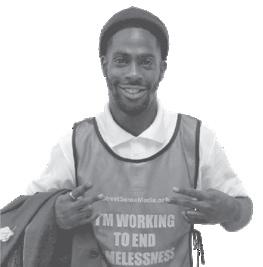 ANTHONY CARNEY Artist/Vendor
ANTHONY CARNEY Artist/Vendor
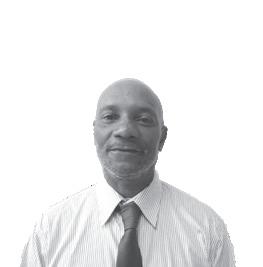
Your health is your wealth. Make sure you keep your medical appointments. Being homeless with physical disabilities is very hard while you’re living on the streets. So thank the higher power for your health. I was sick all of March with arthritis in both knees, so I could not see my customers. I still have arthritis, but I’m managing it better so it is less painful. And I’m back in business!
It ain’t fun being broke as a joke – looking for hope, Hoping nobody knows you got a tent for a home. Heart full of warmth in a world so cold, Keep your head high, when your spirits feel low, When you swallow your pride do you hope it don’t show, What’s broke? To the broken!
Got the eye to see the hope in the hopeless, Lone soldiers, keep rolling, You gonna stay anything, Stay focused … “Looking for Hope.”
I try to live an adventurous life. When I turned 18, I went skydiving. I was amazed at how much wind hits you in the face, almost too much. When you free fall, you're traveling at about 129 mph. It's difficult to breathe unless you arch your back and look towards the horizon instead of down. In any event, it's over too quick. Fifty seconds of free fall and $180. I think I'll save my money in the future, and ride a roller coaster.
Artist/Vendor
We are having a BBQ! Family decorations and fun pictures show togetherness all across the yard. There are plenty of songs to dance to. We can dance all night if we want. It’s lots of laughter seeing the elders showing their moves on the dance floor.
We sit down to share some juicy ribs, hamburgers and hotdogs. My cousin fried some fish and everybody got up and raced in line for it. That line was long, circling around the yard. Some of us started sharing recipes for good food to try. When our stomachs settled, we played basketball and ran back and forth, hitting twos and threes behind the three point line.
For a refresher, there was some large sweet watermelon that was dripping juice everywhere. It was the best. Somebody’s friend baked some chocolate chip cookies for us. They were nice, chunky and melted in your mouth good. Then we danced a few more times to the gospel and Motown mix. Then we watched a colorful water show that had all kinds of animals in different regions moving inside the water. While we were watching the adventure story in the water, we ate some ice cream. Then we kissed, hugged and said see you next time. They went home. We had great fun at the BBQ.
I asked Daniel P. Ball was he warmed up to play in this football game today? His answer was “yes.”
Daniel says he was a builder in 2022 and he gave us this idea to help us to build this nice building you see here today. One of my Street Sense friends asked me did I really give them this idea? And my answer was “yes.”
And one of my good friends named Maria asked whether Sybil and I are ever going to get married. And we both gave her this answer: “yes.” And Daniel said, “Thank you, Will and Willie.”
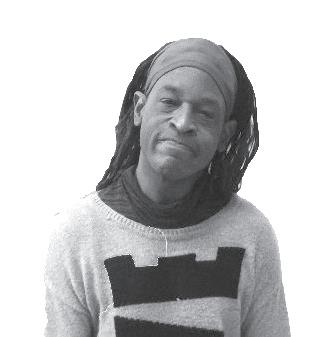
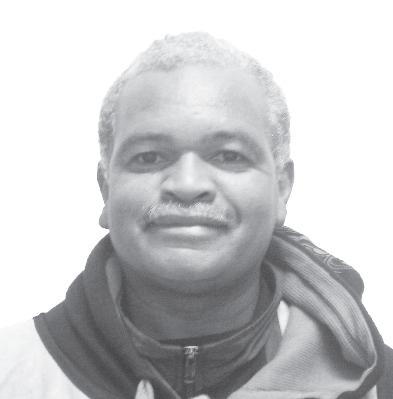
When I was younger, I didn’t know how to forgive people who had hurt me or abused me. I would hold a lot of anger toward that person for a very long time. I wouldn’t let anything go for nothing and hold onto the past. I didn’t know to let the past be the past, and to move on from the hurt and pain. I didn’t want to find the love within myself and others, and Bobby Caldwell said, “you tired but don’t give up searching for love in yourself from within and now that I am old, learn to forgive people who hurt me and abused me.” Learn to let go and let go, deal with it. Pray up and learn how to heal my heart and heal myself and my mind’s spirit. Learn that we have to forgive people. You will forget what they did to us and what they put us through. If you talk to yourself and learn to be a better you, it will be better. The best way to heal from the hurt is to start writing in journals.
When I first came to Academy of Hope, I did very well in class. My reading score was 205 and my math score was 196. I went to level B but I want to try to get to level C. I know I’m going to get there. In Washington, D.C., students can earn their GED if they pass four subtests. The exam can be taken online or in person at designated testing centers. The GED exam contains four subjects that you must pass: math, science, social studies and language arts.
What is the lowest passing score for GED? On each test, you’ll receive a score between 100 and 200. And you need to score a 145 to pass and earn your diploma. Altogether, you should be able to get your GED within a few short weeks. However, you need to have good reading skills and understand the vocabulary that’s often found on the GED test. You also need some knowledge of math.
What is the hardest part of the GED? Typically, the math exam is the most challenging. If you score under 145 in any subject, you can retake that test. Retesting is an option for you.
Academy of Hope offers free programs to D.C. residents over the age of 18. They are located at 421 Alabama Ave. SE.
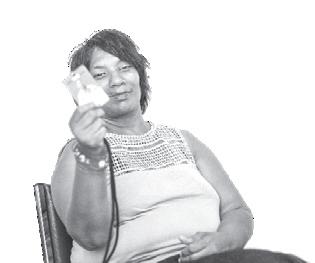
How do you schedule a GED test? You can either go to Ged.com or call 877-392-6433. Learn more about Academy of Hope here: www.aohdc.org.
To be a lady, to stay strong. Love oneself. To respect the world as it is, Wise, strong, diligent, honorable, and having integrity. To understand, to know.
I feel love. I know love. I know light. From darkness.
To be a woman. To be strong. To be beautiful. I understand. We are all created different. With our wisdom. With our strength. It’s stuff that God gave us. So, to be honest about oneself. To love oneself,
I know unconditional love. I was taught as a child to love and respect everyone. To show love to those who hate me.
So, I do just that. I understand where we are now. To know God’s got us. We’re never alone. So, queer to queen. Women to women. It’s bad when we speak evil. That evil comes from the heart. It comes out of the mouth. You know that words hurt. It could be more damaging. Than the fist to a face. So I know hate when I see it. And I know pain when I see it.
Me, a bisexual Goddess. Me, a strong, beautiful fenom. I know love. I know I am loved. And I know negative from positive. I was taught as a young child never to hate or be evil. When we speak to one another,
We should be respectful of others. Queer to queen, That’s the way God wants it.
One thing I learned, that when we hate, God says it’s a sin. God made us all. And she said, “Love one another like you love me.” So, when we don’t, to me that’s like saying you don’t like God, you don’t respect God or her word.
Woman to woman.
When you are not working, it is hard to focus. But when you set your mind together it comes right to you. That’s why sometimes you need help from another person, to help you to figure it out.
Here’s some advice:
• Love yourself
• Take care yourself
• Be happy
• Love one another
• Be free
• Work on something
• Share your work
• Get together in a group
• Publish
• Go out and get some newspapers
• Work it out
• Handle your business
• Step up
• Publish
• Think hard
• Prepare yourself
• Write something
• Go out and work
• Wait for a job
• Go to Street Sense
NIKILA SMITH
Artist/Vendor
step into the shadows look from another angle
a faint smell of decay
Rises from a distance
Death is on the other side
Grief of
Loved ones
HENRIEESE ROBERTS
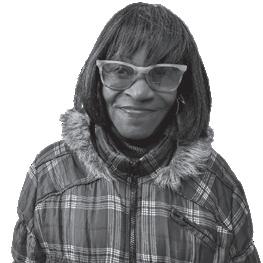
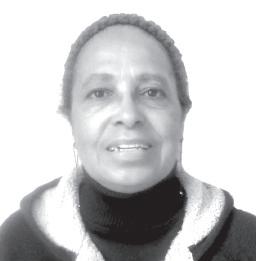
Artist/Vendor
My second shoot of the African American Parade that took place in New York on the third Sunday of September, left me crying my heart out.
I did not calculate my camera settings for darkness. Here we were at the end of the parade, and at around 5:45 p.m. a roaring sound of drum beats rendering “rat-tat-tat” sounds like a English band would make, announces “Here comes Baltimore!” The crowd cheers endlessly.
Darkness crept up rapidly and I held steadfast to a lens that does not capture low light, which is light that is dark. The band sped on by and then stopped! What happened was they began turning their bodies into “o’s” and then around and around! I missed that feat and dropped immediately into tears.
I am mastering light changes at shoots like these and planning for success at Baltimore and New York’s African American Parade.
Artist/Vendor
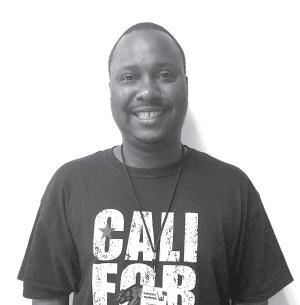
The weather report can be found on the news during times of emergency. The weather can also be found in newspapers such as your local city newspaper and national newspaper. Also the news can be found on the internet.
Shelter is best found in places with air conditioning. If necessary, it can also be found on trains, buses, hospitals, etc.
you’re still in a new form, eyes open from your old body,taking on a new shape, knowing your flesh is not calling another
your cells are with Death
memory is in a distant it once was close
An untouchable life is touching on Death
weariness, sadness, and depression aregone with the wind sticking to Death
problems are not wanted or needed with Death
there is no sense of being your senses die courtesy of Death
are we divided in death? do we keep any of our emotions?
are we free with Death?
skin color is so important in life
in death, your skin is bad
it smells
it's not beautiful
Death says its not needed not me
“We don’t need skin when we die”
Across 1. “____ the thought!”
7. Parts of a French archipelago (Fr.)
11. One may be a major turning point for a ballerina
14. Common bacon preference
15. Iditarod terminus
16. Carte start
17. ‘60s music phenomenon that ushered in the “British Invasion” (LIMA BEAN TEA anagram)
19. Driver’s lic. and others (abbr.)
20. What Lea Michelle and Cory Monteith did on Fox’s popular musicbased comedy-drama? (3 wds,) (4,4,4)
22. Dawn goddess
25. Electrically stun
26. Garlicky mayonnaise
27. Summaries (SPACER anagram)
29. A Mega-lottery winner might be walking around with one (2 wds.) (3,4)
31. Came up
32. Distinctive flair
34. “Yeah, right. When pigs fly!” (3 wds.) (5,1,5)
39. Basilica area
40. Gray-barked tree with edible nuts
43. Engage in an activity that brings you joy, say (2 wds.) (4,3)
48. Reply to “Gracias”(2,4) (Sp.)
49. The deceiver who weaves “a tangled web” in a well-worn proverb, for one (2 wds.) (1,4)
50. ____ effort (2 wds.) (1,3)
52. Article written by Freud and Angela Merkel? (Ger.)

53. Feature typically associated with feelgood flicks... and found in 20-, 29-, 34- and 43-Across
(2 wds.) (5.7) (HANDY PIGPENS anagram)
57. Suffix with meth-
58. It’s orbited by the International Space Station at 17,500 mph (2 wds.) (6,5)
62. Opposite of vert., as a TV adjustment (abbr.)
63. Start of a magician’s 2-word incantation
64. Lake on the French/Swiss border
65. Opposite of a ques. (abbr.)
66. Thumbs-down voters
67. Most judicious response when given a honey-do list, maybe (2 wds.) (2,4) (incls. abbr.)
Down
1. Banned chemical formerly used in industrial and consumer products (initialism/ acron.)
2. Before, in poetry
3. River inlet
4. Suffix for essay or novel, but not poem
5. Kind of soup made with a green legume (2 wds.) (5-3)
6. Wolflike Serengeti scavengers
7. Stupefied (2wds.) (2,3) (A WINE anagram)
8. Blonde bombshell Anderson of 1970s TV
9. Radiate, as light or odors
10. With “the,” a witchy nautical villainess of old Popeye cartoons (2 wds.) (3,3)
11. One who can give someone fits, yet suits them fine?
12. Yale, to alums (2 wds.) (3,3)
13. Enter cautiously and/or gently (2 wds.) (4,2)
18. Some British sports cars, familiarly
(abbr./initialism)
21. ____ economy (labor market characterized by contract/freelance work)
22. Victorian, for one
23. “___ the land of the free ...”
24. Get off ____-free
28. Word with tray or Wednesday
29. Most famous Christian in Hollywood?
30. One ____ million (long odds) (2 wds.) (2,1)

32. Cable network with ESPY awards (abbr./acron.)
33. Part of U.N.L.V.
35. Fraternity letter with a cross shape
36. Supremely proficient consumer hacker, familiarly
37. Word before ___-Xer, ____-Yer or ____-Zer
38. Lav: landlubbers :: ____ : sailors
41. Do, re, mi in the C major scale
42. With 61-Down, utterance that 53-Across may prompt






43. Utterance that may well be prompted by
53-Across (2,2,2)


44. Substance abuse family support group
45. Deadly snakes
46. “The Raven” writer’s inits.
47. Skillet-like cooking utensil
48. “Stay here!” (2 wds.) (4,2)
50. Turnblad of “Hairspray” and Krabappel-Flanders of “The Simpsons”
51. Cry of disgust
54. Island of Napoleon’s exile
55. ___ a soul (“hardly anyone,” quaintly)
56. Bring it home unintentionally from beaches or golf courses
59. Mr. ____ (old whodunit board game similar to Clue)

60. New Deal dam-building program (abbr./ initialism)
61. (See 42-Down)
*This crossword puzzle is the original work of Patrick “Mac”McIntyre. It is provided to us courtesy of Real Change News, a street paper based in Seattle, Wa. Learn more about Real Change News and the International Network of Street Papers at realchangenews.org and insp.ngo.
 JAMES DAVIS Artist/Vendor
JAMES DAVIS Artist/Vendor

All services listed are referral-free
Academy of Hope Public Charter School 202-269-6623 // 2315 18th Place NE aohdc.org
Bread for the City - 1525 7th St., NW // 202-265-2400 - 1640 Good Hope Rd., SE // 202-561-8587 breadforthecity.org
Calvary Women’s Services // 202-678-2341 1217 Good Hope Rd., SE calvaryservices.org
Catholic Charities // 202-772-4300 catholiccharitiesdc.org/gethelp
Central Union Mission // 202-745-7118 65 Massachusetts Ave., NW missiondc.org
Charlie’s Place // 202-232-3066 1830 Connecticut Ave., NW charliesplacedc.org
Christ House // 202-328-1100 1717 Columbia Rd., NW christhouse.org
Church of the Pilgrims // 202-387-6612 2201 P St., NW food (1-1:30 on Sundays only) churchofthepilgrims.org/outreach
Community Family Life Services 202-347-0511 // 305 E St., NW cflsdc.org
Community of Hope // 202-232-7356 communityofhopedc.org
Covenant House Washington 202-610-9600 // 2001 Mississippi Ave., SE covenanthousedc.org
D.C. Coalition for the Homeless 202-347-8870 // 1234 Massachusetts Ave., NW dccfh.org
Father McKenna Center // 202-842-1112 19 Eye St., NW fathermckennacenter.org
Food and Friends // 202-269-2277 (home delivery for those suffering from HIV, cancer, etc)
219 Riggs Rd., NE foodandfriends.org
Foundry Methodist Church // 202-332-4010 1500 16th St., NW ID (Friday 9am–12pm only) foundryumc.org/ministry-opportunities
Friendship Place // 202-364-1419 4713 Wisconsin Ave., NW friendshipplace.org
Georgetown Ministry Center // 202-338-8301 1041 Wisconsin Ave., NW georgetownministrycenter.org
Jobs Have Priority // 202-544-9128 425 2nd St., NW jobshavepriority.org
Loaves & Fishes // 202-232-0900 1525 Newton St., NW loavesandfishesdc.org
Martha’s Table // 202-328-6608 marthastable.org 2375 Elvans Road SE
2204 Martin Luther King Ave. SE
Miriam’s Kitchen // 202-452-8926 2401 Virginia Ave., NW miriamskitchen.org
My Sister’s Place // 202-529-5991 (24-hr hotline) mysistersplacedc.org
N Street Village // 202-939-2060 1333 N St., NW nstreetvillage.org
New York Avenue Shelter // 202-832-2359 1355-57 New York Ave., NE
Patricia Handy Place for Women 202-733-5378 // 810 5th St., NW
Samaritan Inns // 202-667-8831 2523 14th St., NW samaritaninns.org
Samaritan Ministry
202-722-2280 // 1516 Hamilton St., NW 202-889-7702 // 1345 U St., SE samaritanministry.org
Sasha Bruce Youthwork // 202-675-9340 741 8th St., SE sashabruce.org
So Others Might Eat (SOME) // 202-797-8806 71 O St., NW some.org
St. Luke’s Mission Center // 202-333-4949 3655 Calvert St., NW stlukesmissioncenter.org
Thrive DC // 202-737-9311 1525 Newton St., NW thrivedc.org
Unity Health Care 3020 14th St., NW // unityhealthcare.org
- Healthcare for the Homeless Health Center: 202-508-0500
- Community Health Centers: 202-469-4699
1500 Galen Street SE, 1500 Galen Street SE, 1251-B Saratoga Ave NE, 1660 Columbia Road NW, 4414 Benning Road NE, 3924 Minnesota Avenue NE, 765 Kenilworth Terrace NE, 555 L Street SE, 3240 Stanton Road SE, 3020 14th Street NW, 2700 Martin Luther King Jr. Avenue SE, 1717 Columbia Road NW, 1313 New York Avenue, NW BSMT Suite, 425 2nd Street NW, 4713 Wisconsin Avenue NW, 2100 New York Avenue NE, 2100 New York Avenue NE, 1333 N Street NW, 1355 New York Avenue NE, 828 Evarts Place, NE, 810 5th Street NW
Washington Legal Clinic for the Homeless 1200 U St., NW // 202-328-5500 legalclinic.org
Custodial Worker
Medstar Health // 3800 Reservoir Rd. NW, Full-Time
Performs various housekeeping and heavy-duty cleaning throughout all Hospital buildings and surrounding areas and inventories
Required: Completion of tenth grade
Apply: tinyurl.com/MedStar-Custodial-Worker
Housekeeper
Marriott Marquis // 901 Mass. Ave NW
Full-Time // Multiple positions available
Perform any combination of duties in public areas, such as cleaning restrooms, emptying trash cans, inspecting furniture, and maintaining lights.
Required: N/A
Apply: tinyurl.com/Marriott-HousekeeperPM
Donut Finisher
Dunkin Donuts // 1327 Kenilworth Ave NE
Full-Time or Part-Time
Responsible for producing donuts and bakery products according to Dunkin operational standards and franchisee policies and procedures, and maintaining a clean, safe, and organized workspace.
Required: N/A
Apply: tinyurl.com/Dunkin-Donut-Finisher
The Welcome Table // 202-347-2635 1317 G St., NW. epiphanydc.org/thewelcometable
Whitman-Walker Health 1701 14th St., NW // 202-745-7000 2301 MLK Jr. Ave., SE // 202-797-3567 whitman-walker.org Hiring? Send your job postings to editor@StreetSenseMedia.org For further information and listings, visit our online service guide at StreetSenseMedia.org/service-guide





